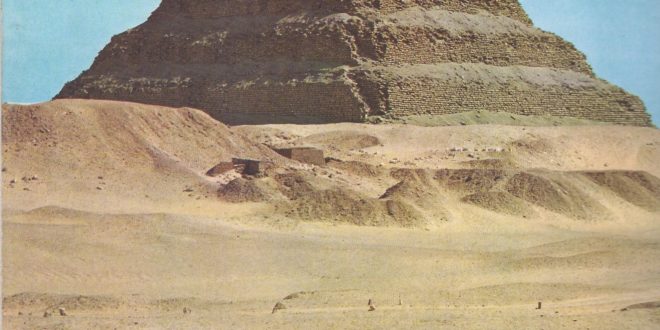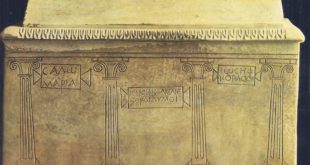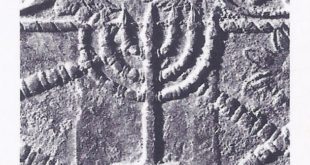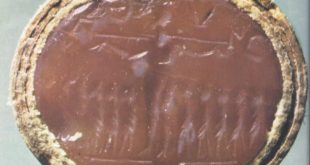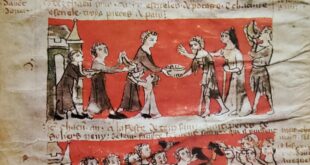On the long road to civilization, the emergence of the national state –particularly in the context of the world in which we live — is of paramount importance in 3000 BC. Although other countries, in particular Mesopotamia, modern day Iraq, developed some of the arts of civilization earlier, Egypt was the first country to draw itself together with a national identity. The documents that survive from the period 3000 BC are few and therefore it is all the more remarkable that we know as much as we do about the unification of Upper and Lower Egypt. The invention of writing occurred in Egypt shortly before the event, but there is no written history on which to rely. However, the significance of the event is plain for all to see. Under successive dynasties of pharaohs the country prospered and its civilization flourished.
The brilliance of the Egyptian achievement and its continuity have inspired and influenced mankind profoundly.
The Unification of Egypt in 3000 BC
If you travel south from Cairo, along the west bank of the Nile, you will see on your left a narrow strip of bright green vegetation, sometimes shadowed by palm groves and ending suddenly in the broad, slow-moving, mud-brown river. On your right the vegetation ends abruptly, and beyond it the Western Desert begins, a ridge of golden, wind-blown sand, sprinkled with eroded rocks that look as if they had been baked and split by the fierce sun.
The road swings to the right, climbs the desert ridge and suddenly you see before you a mighty pyramid built in steps, surrounded by a high wall enclosing a large courtyard; and not only this but many other pyramids rising out of a plateau of billowing sand that stretches endlessly to the west, as sterile and hostile as it was in the days of the pharaohs. This is the five-thousand year old cemetery of Saqqara, burial place of generations of kings, noblemen and high officials for more than a thousand years.
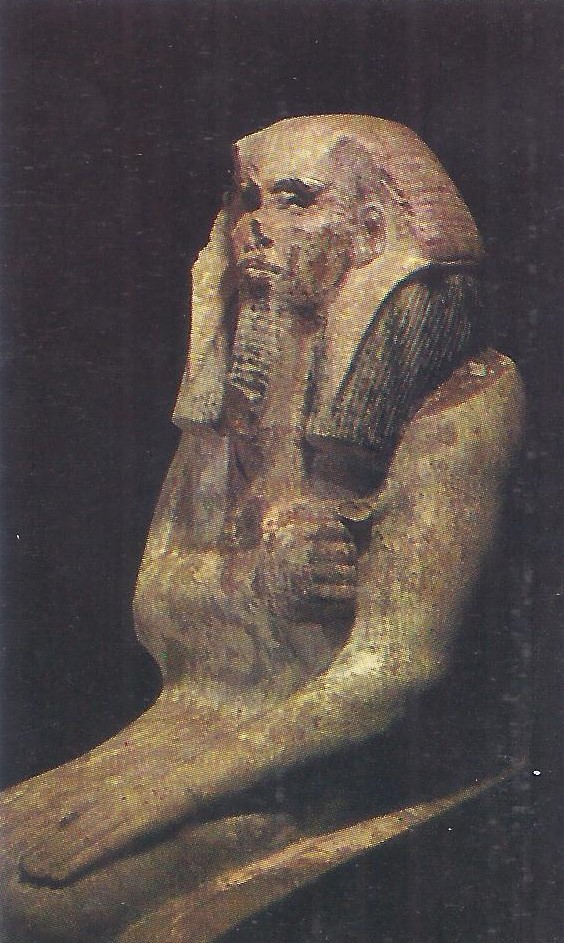
The Step Pyramid, built for the Pharaoh Djoser (2800 B. C.) is the oldest large stone monument in the world, but it is far from being the oldest tomb at Saqqara. A little to the north of it are the ruins of a series of large mud-brick structures called mastabas — the Arabic word for bench. One these, prosaically known to archaeologists as Tomb 3357, once contained the funerary equipment and probably the body, of the first pharaoh of the First Dynasty, a ruler who preceded Djoser by at least four hundred years. His tomb or cenotaph (it is not certain which) has been variously dated as somewhere between 3200 and 3000 BC One of his names (for the pharaohs bore several) was Hor-Aha; he was the first pharaoh to rule over an united Egypt.
3000 BC during Hor-Aha’s reign and that of his predecessor, Narmer, mark a momentous turning point in history, the point at which Egypt, until then an agglomeration of petty states loosely federated into two kingdoms, became one truly united state under one divine ruler, the pharaoh. The conquest was probably achieved mainly by Narmer, who came from southern or Upper Egypt, but the unification was advanced by Hor-Aha, one of whose names was Min or Men. It is significant that the historians of Greek classical times, who had access to Egyptian temple records long since destroyed, state that the founder of Egypt was Menes, which seems to be the classical Greek form of Men or Min. There is still some controversy among Egyptologists as to whether Menes was Hor-Aha or Narmer. Perhaps the two kings had become fused in folk memory as one man. What is certain is that Hor-Aha was the first pharaoh of the First Dynasty and that he ruled some time between 3200 and 3000 BC, after the conquests of his predecessor, Narmer, had laid the foundations of unification. It is important to remember that we are dealing with a period before the beginnings of written history and the invention of writing seems to have occurred in Egypt only shortly before Narmer’s conquest. The documents that have survived are few, rudimentary and a great deal of speculation is involved.
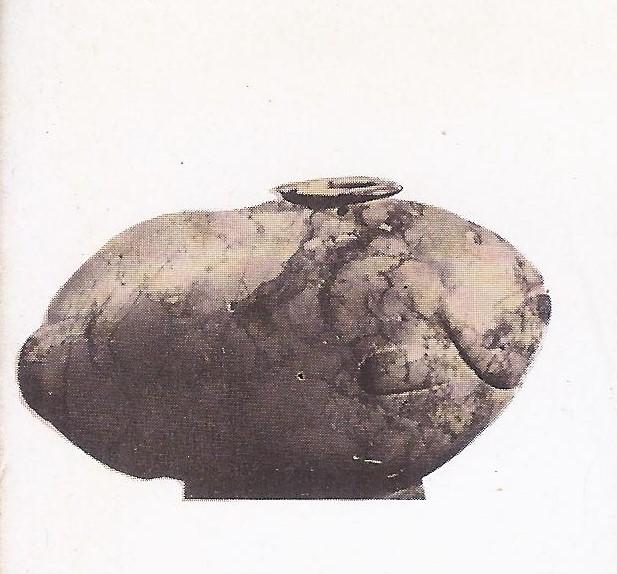
Narmer’s original capital was probably Hierakonpolis in the south. Unlike Lower (i.e. northern) Egypt, Which consisted mainly of the flat, highly fertile Nile Delta, Upper (i.e. southern) Egypt covered more rugged land and probably bred a hardier race of people. Already by about 3200 B. C., the inhabitants of both Upper and Lower Egypt were at a fairly advanced state of Civilization. They could make copper as well as stone weapons. They could write. They were capable of producing works of art such as the Slate Palette of Narmer and the famous ivory Mace-head of Hierakonpolis, both of which are carved with scenes apparently depicting Narmer’s conquest of Lower Egypt.
The Slate Palette of Narmer found at Hierakonpolis (c 3000 BC) is one of the most important historical documents discovered in Egypt. On one side there is a scene showing Narmer walking in procession, preceded by his attendants; on the same panel are rows of decapitated corpses of his enemies. Another section on the same side of the palette shows the pharaoh, in the form of a bull, demolishing an enemy fortress. On the reverse side, Narmer is shown in an attitude typical of that adopted by later pharaohs, with one hand grasping the hair of a kneeling captive, the other holding a club. Beneath this the king’s enemies are shown in flight. The date of the palette is between 3200 and 3000 BC and the primitive hieroglyphs on the stone spell out the name Nar-Mer.
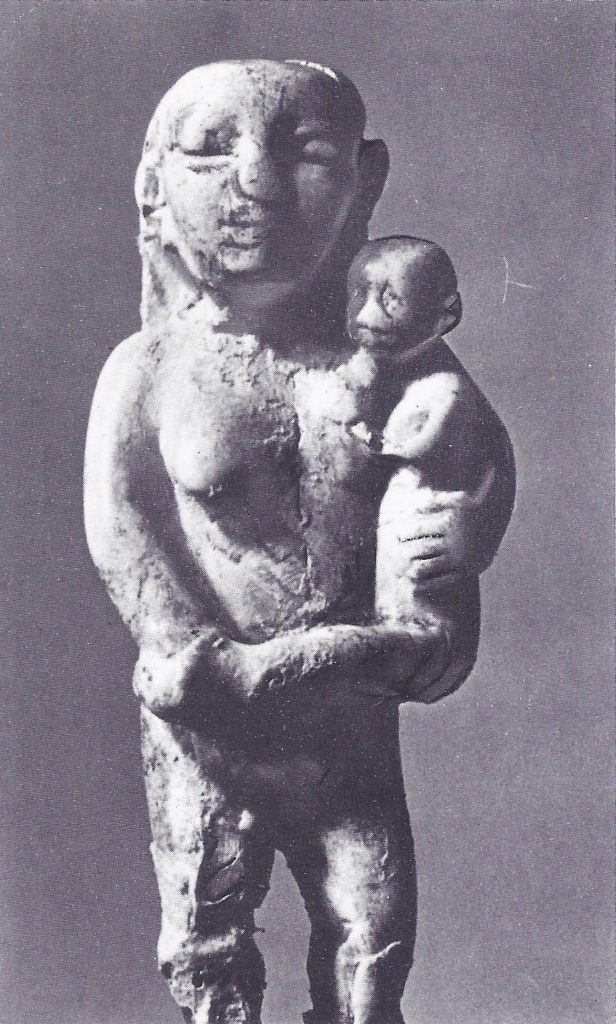
The Mace-head of Narmer is equally important. It shows Narmer seated on a throne and wearing the “Red Crown” of Lower Egypt. Above him hovers the vulture-goddess Nekhbet of Hierakonpolis; before him march the standard-bearers of his conquering army. There is also a little figure of a woman seated beneath a palanquin. This fiqure is believed to represent a princess of the conquered kingdom of Lower Egypt whom Narmer subsequently married — probably Queen Nit-hotep whose lavish tomb was discovered at Nagadeh. The primitive hieroglyphic signs clearly depict the name Nar-Mer (within a rectangular structure called the serekh, probably representing the panelled facade of his palace) and various numerals that indicate 120,000 men, 400,000 oxen and 1,422,000 goats captured in war.
That Narmer was a mighty conquer is without doubt; yet no large monuments of his period have yet been found north of Tarkhan and his queen was buried at Nagadeh. A somewhat insignificant tomb, No. B10, at Abydos, also in the south, has been identified as his, but since the kings of this and later periods had two tombs, one in the south and another in the north (symbolizing their dominion over the two kingdoms of Upper and Lower Egypt), it is possible that the real tomb of Narmer still awaits discovery.
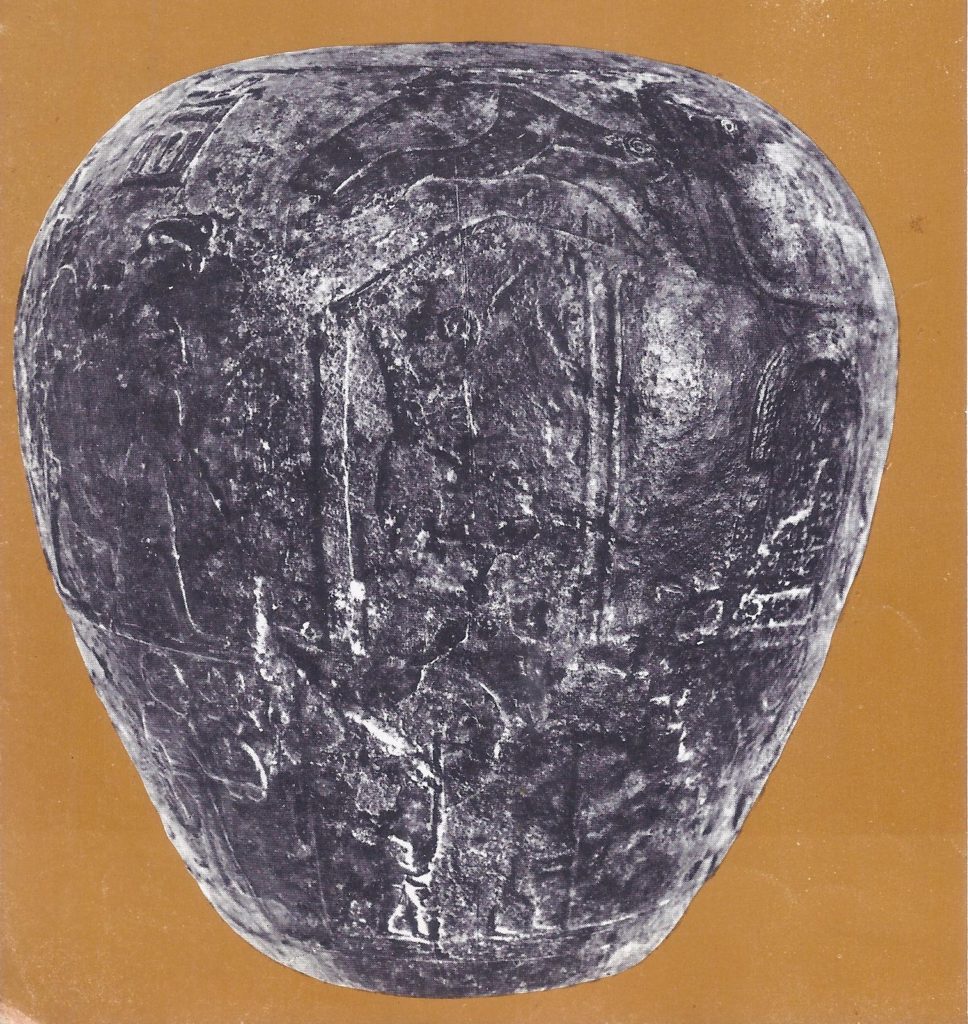
About 3000 BC, Hor-Aha, Narmer’s successor and the first ruler of a united Egypt, bore a name that means “fighting hawk.” This was his Horus name, as ruler of Upper Egypt, but to symbolize his rule over Lower Egypt, he used the Nebti name of Men (or Min) signifying “Established.” The co-relation of these two names was proved when an ivory plaque bearing them both was discovered in the tomb of Queen Nit-hotep. This is ivory label also depicts a most important scene commemorating the unification of the two lands.
Hor-Aha fought successful campaigns against the Nubians beyond the First cataract and no doubt had to engage in other frontier wars, but, by right of both conquest and inheritance; he was the first ruler of a united Egypt. His greatest achievement was the foundation of a new capital called by the Greeks Memphis, near the point at which the two main branches of the Nile divide, a little south of modern Cairo. This site was carefully chosen as the natural frontier between north and south. In order to create it Hor-Aha had to divert the course of the Nile (as Herodotus tells us) and drain the land in order to construct a huge dike.
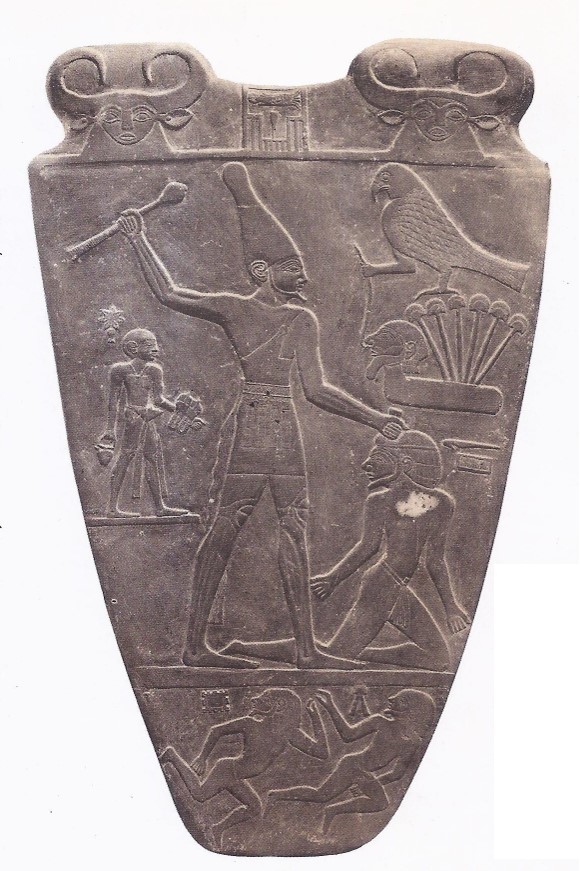
About 3000 BC Hor-Aha made a wise choice of site for his capital. The first Neolithic invaders of Egypt — attracted by the beneficent Nile with its annual gift of rich fertilizing mud and the abundance of wild game near its banks — had arrived some 2,000 years before Hor-Aha’s time. Unlike their wandering hunter ancestors, these Neolithic people could settle permanently in one place, but they and their descendants lived in a conglomeration of petty tribal states scattered over both Lower and Upper Egypt and it was chiefly by siting Memphis at a point that gave him control over an area from the Delta to the First Cataract, six hundred miles up Nile, that Hor-Aha and his successors were able to create and maintain a unified Egypt.
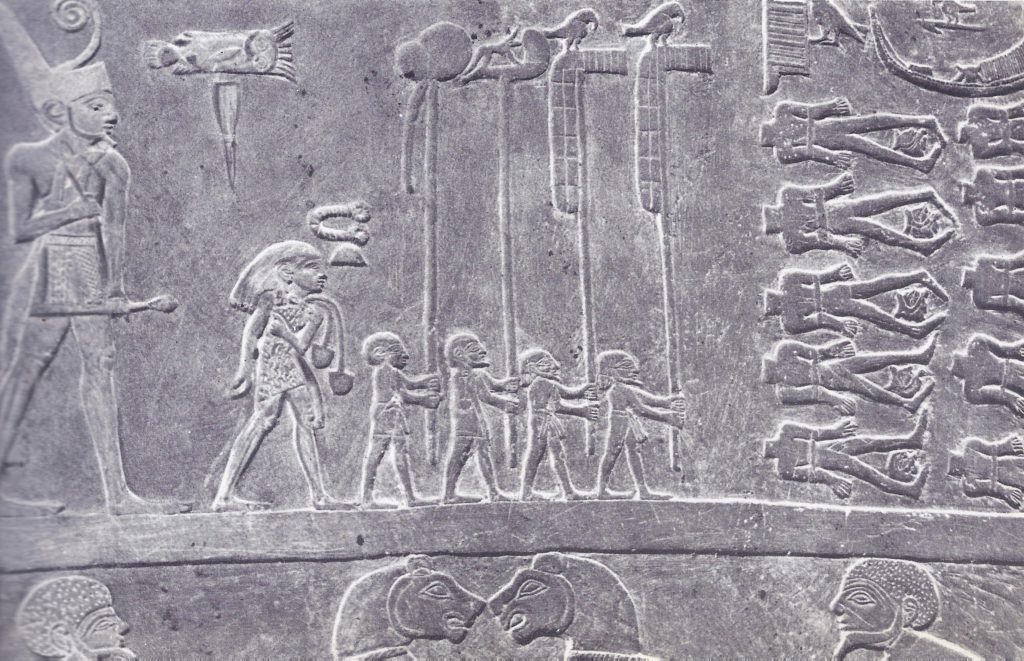
Saqqara was the cemetery of Memphis, and if one stands on the edge of the plateau, one can see beyond the river and amid the palm groves on the east bank a cluster of mud-brick dwellings which is all that remains of what was once the richest and most powerful city on earth. It stretched some ten miles along the east bank of the Nile as far as modern Cairo and beyond. There lay the royal palace and the villas of the nobles and high officials of Pharaoh; there rose the temples of their gods, many-columned and magnificent. All were built of mud-brick, because at this time (c. 3200 B. C.) the Egyptians had not yet learned the art of building monumentally in stone. We know what these buildings looked like because they are crudely represented on the ivory tablets and slate palettes found in the tombs of the First and Second Dynasties. Further, when in the Third Dynasty (c. 2800 B. C.) the Egyptians raised their first great stone building, the Step Pyramid of Djoser and its surrounding walls, courtyards and temples; they reproduced in stone the type of architecture they had previously used for mud-brick and timber.
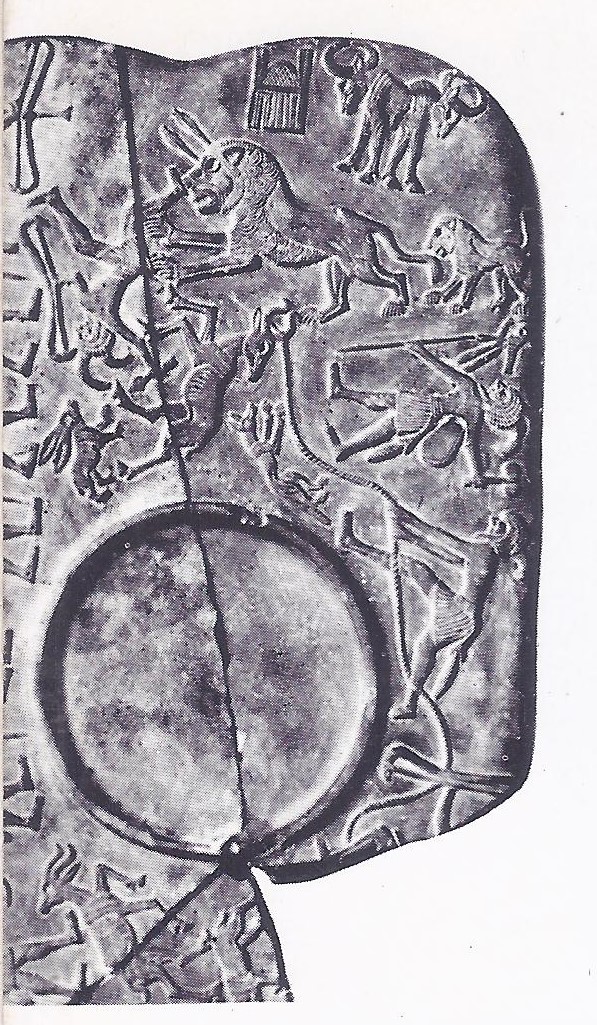
It is a curious fact that this type of architecture, (3000 BC) with its characteristic “panelled facades” also occurs in ancient Sumer, in Lower Mesopotamia, at a somewhat earlier date. Moreover, some of the Egyptian hieroglyphics of this period seem to have been derived from Sumer. These similarities have led certain Egyptologists, notably Professor Walter Emery, Professor of Egyptology at University College, London, to put forward the theory that the founders of Egyptian civilization and the unifiers of Egypt were a foreign race, originating perhaps in Lower Mesopotamia, whose cultural influences spread both eastward to Sumer and westward to Egypt. Only further archaeological investigation can prove or disprove this theory. The majority of scholars continue to assume that the earliest rulers of ancient Egypt sprang from a native stock, though they were almost certainly influenced by the civilization that had arisen in Lower Mesopotamia.
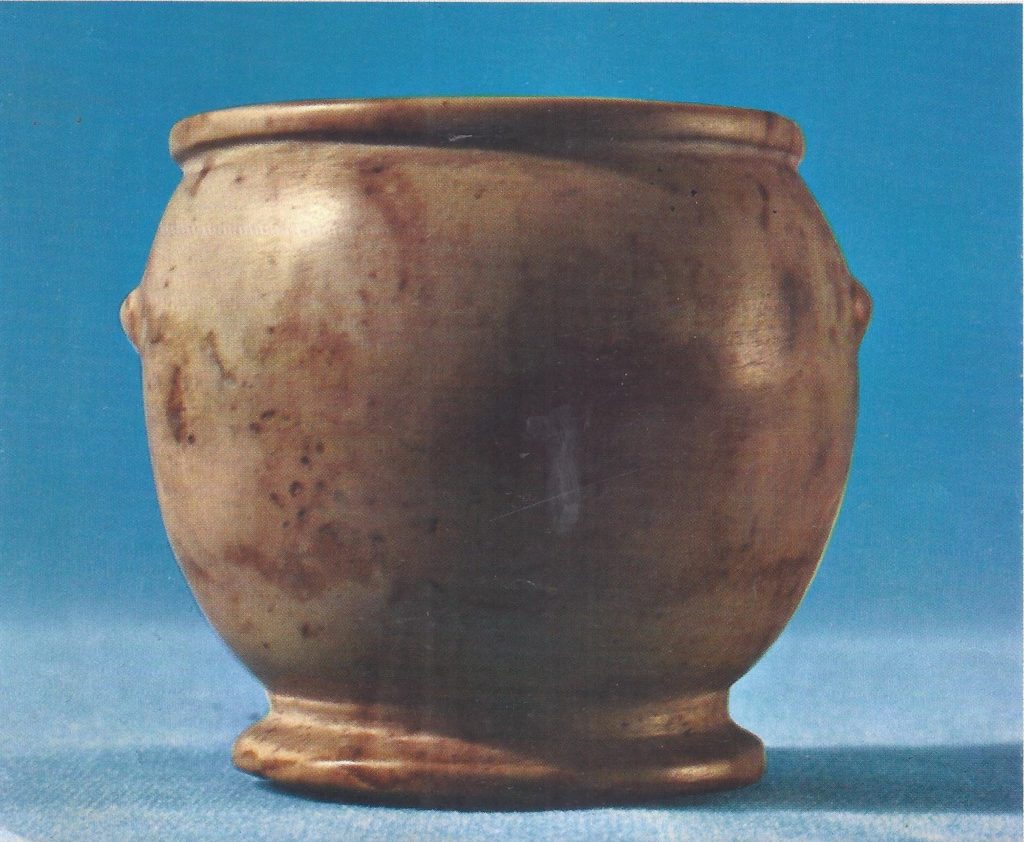
Egyptian Civilization Forges Ahead 3000 BC
It is unlikely that in Narmer’s own time (3000 BC) and that of his immediate successors the effect of the unification was widely felt. Sumer, the only comparable civilization, was very remote from Egypt and there appears to have been only a slight contact, though an important one — that is, unless one accepts Professor Emery’s theory. Nevertheless, objects found in tombs and made during and after Hor-Aha’s time prove that between approximately 3200 and 2800 B. C. Egyptian civilization was developing at a rapid rate. Magnificent stone vases show the skill of the Egyptians in stone carving, a skill that was eventually to reveal itself in the building of the pyramids, tombs and temples of hewn stone. Carpentry, gold work and copper work make it clear that even at this remote period, before the first pyramid was built, Egypt was on the threshold of a long period of cultural expansion.

For the first few centuries after Hor-Aha (or Menes) the emphasis was on internal unification and the creation of an immense monolithic state. The tribal divisions became nomes (provinces), each with its own chief city. Agriculture flourished as the Egyptians learned how to control the flooding of their great river to produce an increasing abundance of food and provide for an increasing population. A large standing army was created. An elaborate hierarchy of officials controlled the kingdom. Expeditions were sent south into Nubia, partly for expansion, partly for trade and also into Libya, in the Western Desert.
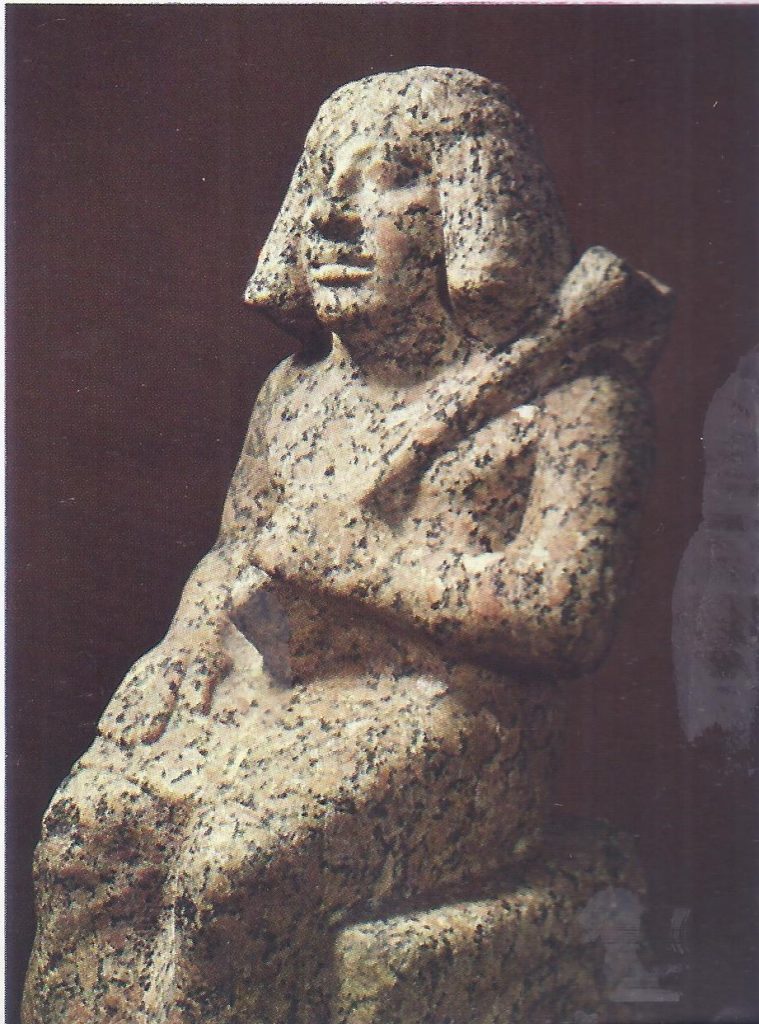
Writing, one of , man’s greatest inventions, developed swiftly and soon became very sophisticated. Scribal schools were set up, adjacent to the temples and a new class of literate priests and their followers provided a body of tax collectors, civil servants and other officials who ran the economy of the newly united kingdom. In about 2700 B.C. the Pharaoh Khufu (or Cheops, to give him his Greek cognomen) built a monument of stone — the Great Pyramid — so enormous that it has been said to contain enough stone to reach two-thirds of the way round the world at the Equator. Similar pyramids were erected by Khufu’s successors, notably at Saqqara, Abusir and Dahshur, all intended to preserve for eternity the bodies of their royal builders.
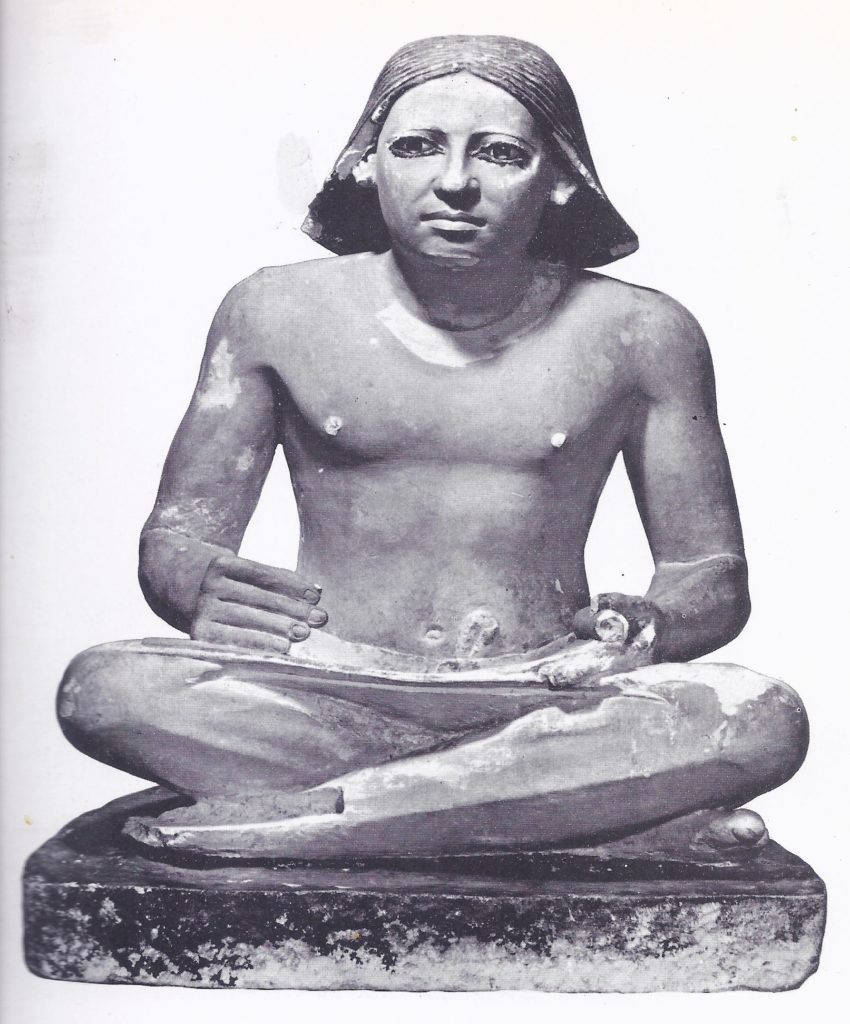
After a period of civil war and internal disruption, the causes of which are unknown, the country revived under a new dynasty of pharaohs, those of the so-called Middle Kingdom (2100-1700 B. C.). The rising power of the nomarchs — governors of the nomes or provinces — was held in check, but disruptive forces threatened the central authority and weakened the power of the pharaohs. A group of tribes from western Asia, known to later historians as the Hyksos or “Shepherd Kings,” seized the opportunity to occupy parts of Lower Egypt. Their leaders set themselves up as pharaohs, so that at one period there were two pharaohs, a Hyksos interloper ruling from Avaris, in the Delta and a native Egyptian pharaoh ruling from Thebes in Upper Egypt.
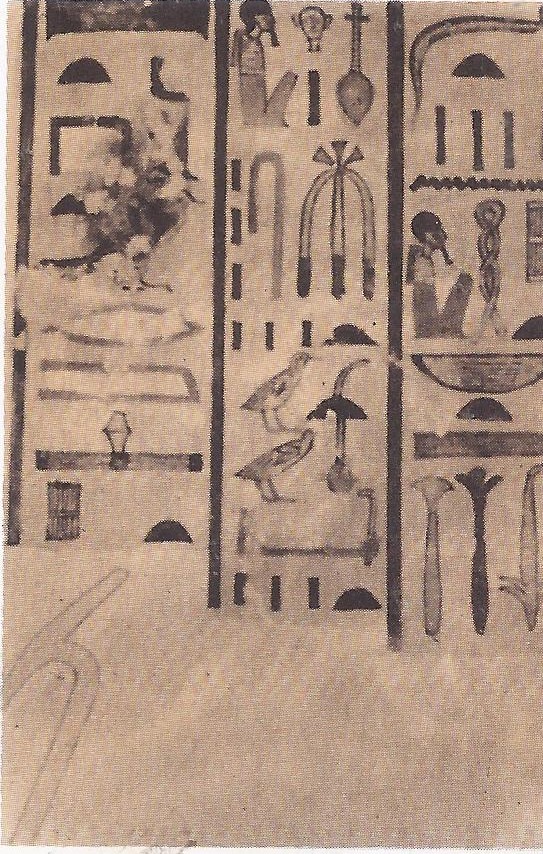
The tradition of national unity established by Narmer and Hor-Aha, however, was so strong that in the end a new dynasty of pharaohs, the Eighteenth, succeeded in driving out the invaders and creating the New Kingdom (1570-1085 B.C.), the first three centuries of which marked the most illustrious period of Egyptian power and influence. This was the period of imperial expansion that eventually led to Egyptian armies penetrating not only into Lebanon, Palestine and Syria but even as far as what is now northern Iraq. Egyptian colonies were set up along the Mediterranean coast and at strategic points in the hinterland, each under its governor.
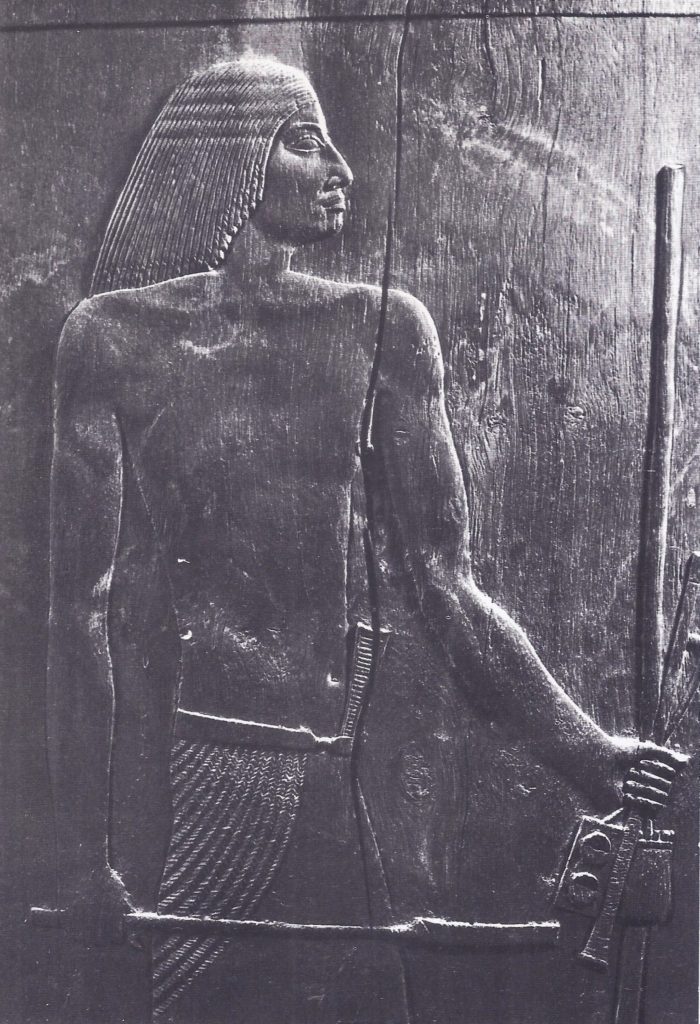
In later years the innate conservatism of the Egyptians hindered their development in comparison with other peoples. For example. they learned to use the horse and chariot in warfare only after the Hyksos had beaten them with this weapon in about 1720 B.C. They continued to depend on bronze weapons when iron was rapidly coming into use in other lands and even in Ptolemaic times (from the fourth century B.C.) they continued to follow their ancient customs although the hieroglyphic inscriptions on temple walls reveal many errors, indications that the engravers had little or no knowledge of the early writings and had become mere copyists. This may be taken as symbolic of Egyptian culture as a whole. Great and splendid though it was in its prime, every generation tended to follow an accepted pattern laid down by their remote ancestors. Even when, in the first century B. C., Egypt became a province of the Roman Empire, the Caesars were represented on temple walls in the traditional dress and performing the traditional ceremonies, of pharaohs just like Narmer and Hor-Aha. To the very end of their civilization, which survived down to Greek and Roman times, they preserved the fiction of the Two Kingdoms of the South and North that had existed before the conquests of Narmer and Hor-Aha. The pharaoh was always known as “The King of Upper and Lower Egypt.”
Yet the debt owed to Egypt by western Asia and eastern Europe is immense. The ancient Greeks, probably the most intelligent race that has ever lived, acknowledged this debt freely. From the time when their merchants began setting up trading posts in Egypt in the seventh and sixth centuries B.C. they were fascinated by Egypt, as one can tell from the pages of Herodotus and Diodorus. Archaic Greek art was clearly influenced by Egyptian sculpture, which at its best has few equals anywhere in the world. The Greeks copied Egyptian medicine and surgery and in many other fields of knowledge looked upon the Egyptian priests as their mentors. As one Egyptian said to an inquiring Greek, “You Greeks are like children everlastingly asking questions.” One may be sure that they would not have asked questions had they not expected useful and illuminating replies.
The Development of Arts and Crafts
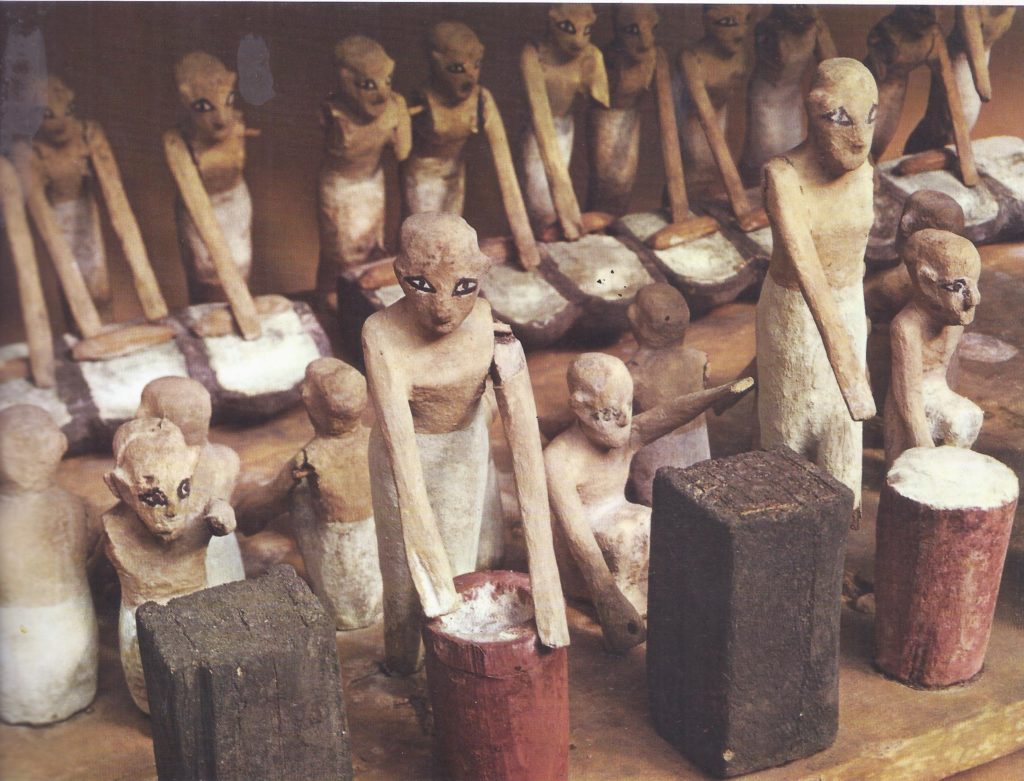
Narmer and his successors, by bringing the resources of the whole country under the control of one ruler, had achieved something of immense importance. For Egypt was one of the most fertile lands in the world and potentially one of the richest. From these beginnings great cities were to spring up, armies would be levied and trained, trade would expand, the arts and crafts would develop and more and more power would be centered on the divine figure of the pharaoh, who claimed to be the “Son of Re,” god of the sun and creator and maintainer of all living things. The unification laid the foundations of a civilized and powerful Egypt with a military and cultural influence extending far beyond its borders.

Below Wooden model of men and oxen ploughing. Models such as these were frequently placed in Egyptian tombs, as part of the provisions made for the needs of the dead person in the after-life, which was thought to be very similar to life in this world.
